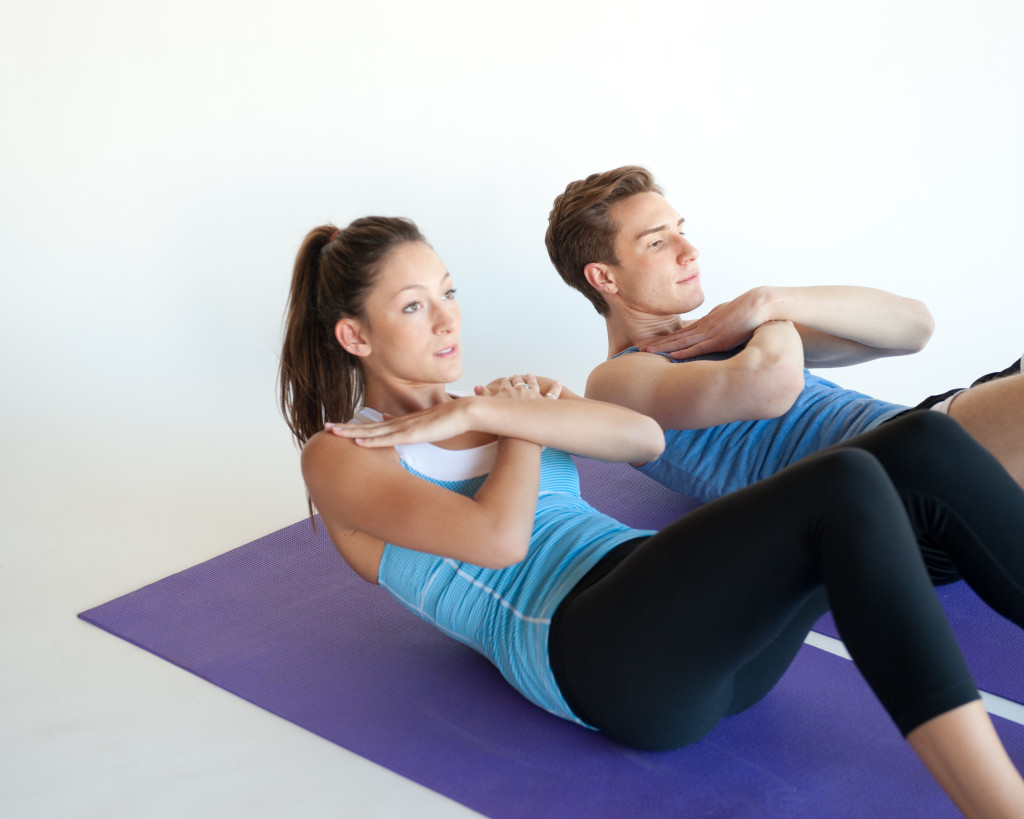 One of the most commonly used exercises people use to build rock hard, 6 pack abs is the sit-up. Unfortunately, it is also the most common exercise that people do not warm up for and the most common exercise people injure themselves performing.
One of the most commonly used exercises people use to build rock hard, 6 pack abs is the sit-up. Unfortunately, it is also the most common exercise that people do not warm up for and the most common exercise people injure themselves performing.
Sit-ups target many different muscle groups in primary and secondary fashion. While the crunch has taken the place sit-ups in most situations, the sit-up targets muscles the crunch ignores. If you want 6 pack abs, the last thing you need to do is ignore any abdominal muscle.
Benefits
Sit-ups focus on muscle groups that are ignored by many exercises. These muscles are as follows:
Rectus Abdominis
This is the muscle that connects the wall of abdominal muscles to the ribcage at the top and to the hips at the bottom. The purpose of this muscle is to pull the rib cage and the pelvis toward each other.
In order to work this muscle, sit-ups should be performed with the back slightly rounded at all times so that the spine is protected. The slight curve in the spine also helps to work the rectus abdominis muscle.
External Obliques
The external obliques are another set of muscles that attach the ribs to the pelvis. These muscles sit to the outside of the rectus abdominis muscles. They are used to twist the body from side to side. Since they are a versatile muscle, they also help to bring the rib cage toward the pelvis.
Tensor Fasciae Latae
This muscle is one that is not worked by the crunch. The tensor fasciae latae attaches to the top of the hip and extends down the front of the femur. The sole function of this muscle is to bend the body back and forth at the hips. In everyday life, we use this muscle most to bring our thigh toward our torso.
In sit-ups however, this muscle is used to bring the torso toward the thighs. Typically, compared to other abdominal muscles, the tensor fasciae latae is very weak but is assisted by the gluteus maximus, or large muscle in the buttox.
Rectus Femoris
The rectus femoris is one of the quadriceps. This is the large muscle that is found in the front of your thigh. All four of the muscles in the rectus femoris group attach to the knee cap.
The main function of these four muscles, including the rectus femoris is to straighten the leg. Unlike the other muscles in this family, this specific muscle goes across the hips and attaches to the pelvis. Here, it aids the tensor fasciae latae in bending the body at the hips.
How To Warm-up
In order to properly prepare your body to do sit-ups, you need to warm up all of the muscles that will be involved in the exercise. These stretches should focus on the stomach, the sides, the back and the legs.
Warming up your muscles will provide maximum performance from your muscles and ensure that you do not unintentionally injure yourself while working out.
It is also advised to walk for at least 10 minutes before doing sit ups. This will provide enough adrenaline to help you get through the repetitions necessary to build muscle.
The Proper Form
The proper form to complete a sit-up requires you to think about every move you make. This will ensure that you do not cause an injury to your muscles or to your lower back or neck.
• Lay down on your back with your knees bent. Your feet should be flat on the floor. Make sure your heels are about 1 to 1 ½ feet from your tailbone.
• Place your fingertips behind your head or place your arms across your chest.
• Squeeze your shoulder blades together. Exhale completely, tighten your abs and curl your body up toward your knees.
• DO NOT pull on your neck.
• Make sure to keep your head in line with your spine and lightly tilt your chin forward as your bring your body upward.
• Your feet, your lower back and your tailbone should be flat against the floor through the entire motion. Curl your body toward your thighs until you are in a seated position. Pause for two seconds.
• Inhale slowly and lower yourself until your back is flat and in contact with the floor again. Keep your muscles contracted through the entire downward phase of the movement.
• Repeat.
How to Cool Down
In order to cool down from sit ups, you should stretch all of the muscles that you used during the exercise, and walk for at least 10 minutes. This ensures that the lactic acid has time to leave your muscles before you rest. If you allow the lactic acid to remain in your muscles you will feel extremely sore and feel as though you overworked your muscles.






